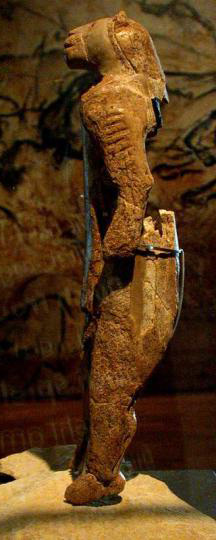Anthropomorphism facts for kids

Anthropomorphism is when we give human qualities to non-human things. This means we imagine animals, objects, or even ideas having human traits, emotions, and thoughts. It's a very common way for people to understand the world around them.
You can often see anthropomorphism in stories, movies, and art. Think about the story of the "Three Little Pigs". The wolf and the pigs talk and act just like people. Another famous example is Mickey Mouse, who walks, talks, and has feelings like a human. These are all examples of anthropomorphism.
Sometimes, anthropomorphism is used to make animals seem more human-like. In the novel The Call of the Wild, the main character is a dog named Buck. Other dogs and wolves are also important characters. In the story, these animals think and act much more like humans than real dogs or wolves would.
Why Do We Use Anthropomorphism?
People are good at understanding why other humans do things. But it's harder to know why non-human things act the way they do. Because of this, we often guess that non-human things might think or act like us.
We learn a lot about humans from a very young age. This knowledge is usually more detailed than what we know about animals or objects. It's also easier for us to remember. So, it's natural for our brains to connect human ideas to non-human things.
Related Ideas
- Furry: This is a type of anthropomorphism. It's when animals and legendary creatures are shown as human-like in stories and art. They might wear clothes, talk, or live in human societies.
Images for kids
-
From the Panchatantra: A rabbit fools an elephant by showing it the reflection of the moon. The animals in this story act with human-like cleverness.
-
John Tenniel's drawing of this anthropomorphic rabbit. He is featured in the first chapter of Lewis Carroll's Alice's Adventures in Wonderland.
-
Anthropomorphic pareidolia by Giuseppe Arcimboldo. This artwork uses objects to create a human face.
-
Fatso the Fat-Arsed Wombat, a popular symbol of the Sydney 2000 Summer Olympics. It was created as a funny version of the official mascots.
-
Pareidolia of a face in a rock. Our brains sometimes see faces in everyday objects.
See also
 In Spanish: Antropomorfismo para niños
In Spanish: Antropomorfismo para niños











